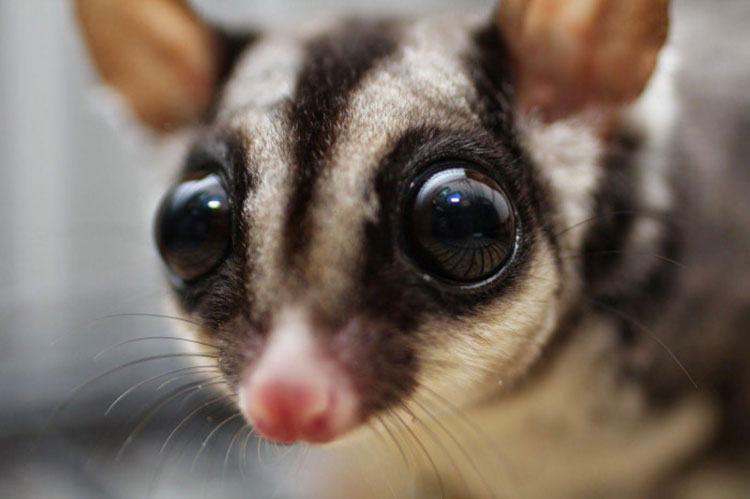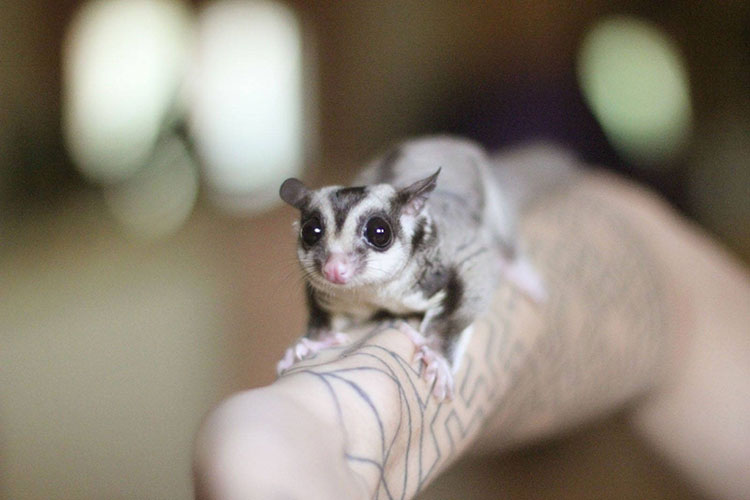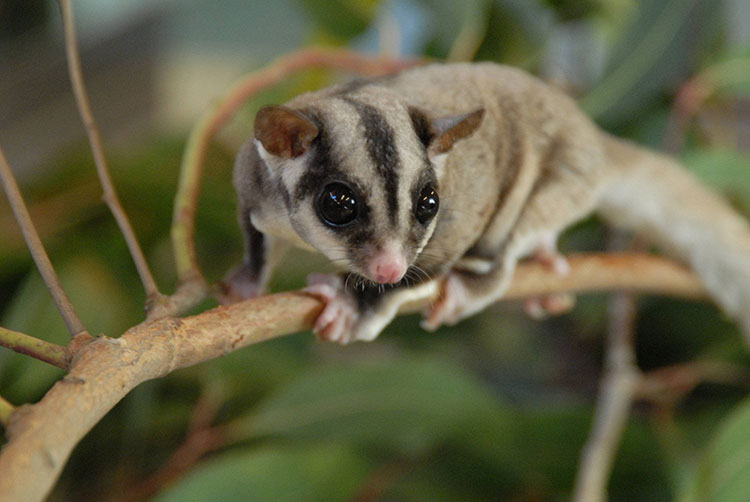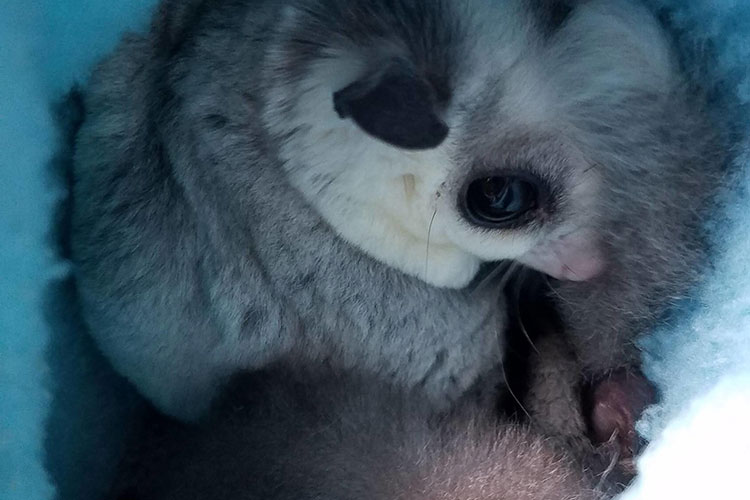Do Pet Sugar Gliders Need Baths

Bathing a sugar glider is unnecessary as they are naturally very hygienic animals and groom themselves regularly. Healthy sugar gliders spend a lot of time grooming themselves, so they are always clean and odourless.
The Risks of Giving Your Pet Sugar Glider a Bath
Bathing your pet sugar glider can do more harm than good, including:
- Unnecessary Stress
Giving your pet sugar glider a bath can be a stressful experience for them. In their natural habitat, sugar gliders do not require baths and usually avoid water except for drinking. Therefore, immersing your pet sugar glider in water can be a frightening and stressful experience.
- Loss of Natural Oils
Bathing can strip away the natural oils in your pet sugar glider’s fur, which are essential for their cleanliness. Sugar gliders depend on these oils to maintain their hygiene, and washing them away can disrupt their natural state.
Helping Your Pet Sugar Glider with Grooming

Your pet sugar glider can groom itself without any assistance. However, there may be instances where they are unable to remove dirt or debris from their fur.
If this occurs, you can help your pet sugar glider by gently rubbing the affected area with a warm, damp towel to remove any dirt or sticky substance.
Should You Sand Bath Your Pet Sugar Glider?
Although some people may believe that sand baths are beneficial for sugar gliders, they are not essential.
Unlike hamsters and chinchillas that are accustomed to taking dust or sand baths, sugar gliders are not desert animals and do not require this type of grooming.
Pet Sugar Glider Odour

Sugar gliders, like other marsupials, carry their young in a pouch and are covered in fur, which can sometimes lead to unpleasant odours. However, there are ways to help eliminate the odour and keep your pet sugar glider clean and fresh.
Here are some reasons why your pet sugar glider may be emitting a bad odour and ways to deal with it:
- Sugar Glider Defense Mechanism
Sugar gliders have a defense mechanism where they emit a strong foul smell with a white fluid from their rectum when they feel scared. To avoid this, it’s best not to put your pet sugar glider in a situation where they feel the need to defend themselves.
- Sugar Glider Diet
The type of food that your pet sugar glider eats can affect the smell of its urine. Feeding your pet sugar glider a diet that mimics what it eats in nature can help prevent foul odours. In the wild, sugar gliders eat nectar and fruits such as bananas, kiwis, and tomatoes.
- Sugar Glider Mating Season
During the mating season, male sugar gliders tend to emit a strong odour that can be unpleasant for pet sugar glider owners. This is a natural occurrence, but if the odour becomes too unbearable, neutering your pet sugar glider is the only solution.
How to Clean Pet Sugar Glider?
Sugar gliders are capable of grooming themselves well, but if your pet is sick or has any issues, you may need to step in and clean it yourself.
It’s important to keep in mind that regular baths are not recommended for sugar gliders. Instead, use a warm towel to gently rub its coat.
Avoid using any type of wet or dry shampoo as it can damage your pet sugar glider’s coat.
If your pet sugar glider is not grooming itself, it could be a sign of an underlying health problem, and you should contact your veterinarian immediately.
The Risks of Pet Sugar Glider Getting Wet

While water itself is not the main issue, getting wet can cause your pet sugar glider’s body temperature to drop, which can lead to severe consequences such as hypothermia or even death.
However, there is no need to panic if your pet sugar glider gets a little wet, as small amounts of rain will not harm it. It only becomes dangerous if your pet sugar glider becomes excessively wet or if it isn’t dried off quickly enough to prevent its body temperature from dropping.
How to Keep Your Pet Sugar Glider Dry
Make sure to keep your pet sugar glider away from any open water sources, such as bathtubs, swimming pools, and toilets. Every year, a significant number of sugar gliders die due to falling into open toilets.
Moreover, it’s crucial to educate children on how to handle sugar gliders properly. Children should not be allowed to play with a pet sugar glider near water without adult supervision. As children are naturally curious, they might want to test what happens if the pet sugar glider gets wet.
Parents should communicate the importance of keeping the pet sugar glider dry and the risks associated with getting it wet. By taking these precautions, you can help ensure the safety and health of your pet sugar glider.
What to Do If Your Pet Sugar Glider Gets Wet
If your pet sugar glider gets wet by accident, the first step is to dry it off immediately to prevent its body temperature from dropping.
Next, move your sugar glider to a warm and dry room or wrap it in a warm towel. The quicker you warm your pet sugar glider, the lower the risk of hypothermia or even death.
However, avoid using a blow dryer to dry your pet sugar glider, even if it seems like a quick solution. The hot air from the blow dryer can cause your pet sugar glider’s body temperature to rise too quickly, which can be just as harmful as hypothermia.
Conclusion
Sugar gliders have become popular pets due to their cute appearance and unique ability to glide through the air. While they can swim, they are not built for prolonged water exposure and getting wet can be dangerous for them. If your pet sugar glider does get wet, it’s important to dry them off quickly and keep them warm. Additionally, sugar gliders are self-groomers and do not need to be bathed, but if you notice poor grooming habits, it’s best to consult with a veterinarian. Overall, sugar gliders make great companions for those who are willing to provide them with proper care and attention.
Download the JoJo Pets app today for exclusive news and offers at https://jojo-pets.com/
